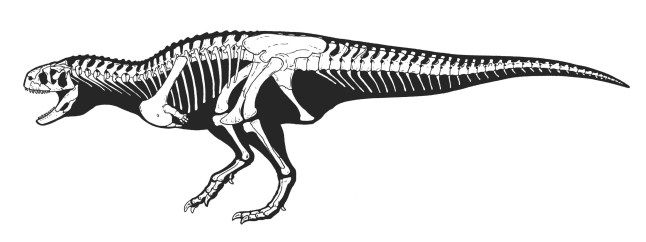
T rex is the dinosaur everyone thinks of if you mention a big lizard with tiny arms.
The ferocious predator could have pulverised you with its teeth, but wouldn’t come out best in a boxing match.
Unless it was matched with Koleken inakayali, that is – a newly discovered species of dinosaur which apparently had little use for its upper limbs either.
Like T rex, it is part of the abelisaurid group of carnivores, all of which have tiny little arms.
One theory is that they just didn’t need them, so they simply evolved out of the way to give priority to their deadly bite. But other line of thinking is that they could have used them for close-up kills.
Whatever the reason, images of what Koleken might have looked like are a little funny given everything else is a muscular killing machine (though we wouldn’t say that to its face).
The new species was discovered at La Colonia Formation in central Patagonia by National Geographic explorer Dr Diego Pol and a global team of researchers and paleontologists.



Research published last week in the journal Cladistics details how they found a partial skeleton, including several skull bones, an almost complete series of back bones, a complete hip, several tail bones, and almost complete legs.
More Trending
It lived 70 million years ago, during the Late Cretaceous Epoch, in the same time and place as the ‘meat bull’ Carnotaurus sastrei, made famous by the film Jurassic World.
Dr Pol said: ‘This finding sheds light on the diversity of abelisaurid theropods in Patagonia right before the mass extinction event.’
Ian Miller, from the National Geographic Society, said: ‘The discovery of Koleken inakayali significantly furthers our collective scientific understanding of the dinosaur era.’
He said the finds shows that the rock formation where it was found ‘is among the most important end-Cretaceous dinosaur-bearing rock units in the world’.
MORE: Popular supplements could actually increase risk of heart disease
MORE: World’s first head transplant system revealed – but can it be done?
MORE: The surprising reason some people are more prone to schizophrenia and depression













